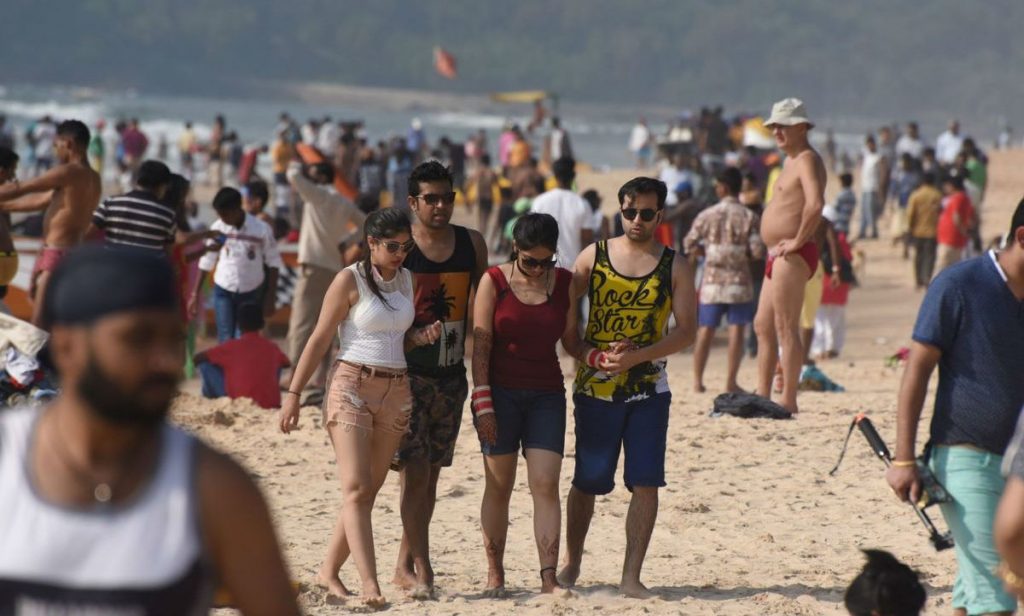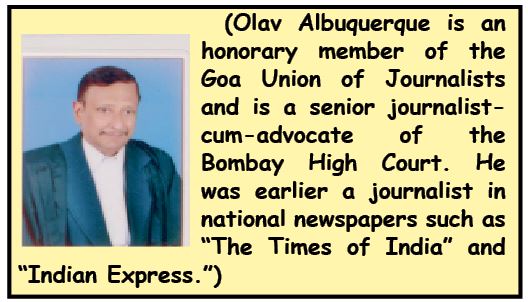Goa is abuzz with excitement as vintage bike and car owners, users, collectors and fans are decking […]

AT WHAT COST SHOULD WE ATTRACT TOURISTS?At the cost of corrupting our local youth! By Dr Olav Albuquerque
Dec 07- Dec 13 2024, LAW December 6, 2024NEXT to the majority Hindus, the Catholics comprise the largest segment of the Goan population, which is why stance of the Church on issues like the New Education Policy and the Sunburn festival needs to be evaluated. The Church rarely publicizes its stance but there can be no doubt that it frowns on promoting tourism at the cost of corrupting the local youth.
This is why when it was announced that Sunburn — Asia’s globally acclaimed annual Electronic Dance Music festival — intended to host its 18th edition on the shores of South Goa from December 28-30, 2024 the Church did not publicize its opinion. The theme for this year’s celebrations will be “An underwater world journey.”
Like the Hornbill Festival in Christian-majority Nagaland, where rice beer is freely old and consumed despite the state being declared a “dry state,” the Christian church in Nagaland frowns on this festival being promoted as a tourist attraction, which allows tourists to buy and consume rice beer. Held annually in the first week of December, the Hornbill Festival is organized by the Nagaland government to publicize inter-tribal culture and customs and showcase its heritage.
What is not told is that like the casinos in Goa which promote gambling, misleading the rest of India that this is a Goan tradition, promoting sale of rice beer results in alcoholism which the Church prohibits based on the teaching of the Holy Bible. Nagaland has 14 tribes most of whom were converted to Christianity in the 1890s when the German Baptist minister came here.
Similarly, Sunburn has become notorious because drugs are available and an alleged drug peddler, Shailesh Shetty was arrested for drug peddling. He is known to be close to a minister. The organisers announced shifting the venue for Sunburn 2024 to South Goa because of insurmountable difficulties of hosting it in North Goa — its venue for its previous editions. Traffic which enters and leaves and parking complications, could be tackled better n South Goa due to its beaches and, and less congestion to make for the perfect getaway.”
A press note also stated Sunburn festival would reintroduce a campsite to allow attendees to camp on the festival grounds. Close to two months away, the organisers are yet to announce a venue for the music festival. In an Instagram post, Sunburn communicated that the team is “…working diligently to finalise the ultimate venue for an unforgettable experience,” confirming that it will now host the festival on one of the North Goa beaches.
Launched in 2007 by Shailendra Singh, Sunburn Goa popularized the EDM festival throughout India. Despite its modest beginnings in North Goa’s Candolim Beach, the festival attracted teenagers, soon featuring renowned DJs, including Carl Cox and Above and Beyond. With the surge in EDM festivals globally, Sunburn Goa grew rapidly — in terms of scale and attendance –with the annual attendees number reaching over a lakh. Previous headliners included the likes of Afrojack and David Guetta, and the organisers soon moved the festival to Vagator Beach, allowing it to accommodate more people, stages, and an extensive line of artists.
But it was not easy to solve the regulatory and logistical issues in 2016, which is why Sunburn Goa had to shift its base to Pune, with the promise of retaining the same experience. It was only in 2020 that the music festival returned to its home turf in Goa.
This year, Sunburn Goa announced it was moving to the southern part of the state. “Our vision is to elevate the bar each year and ensure we offer a memorable experience… we cannot wait for people to experience the magic of South Goa along with us,” Karan Singh, CEO of Sunburn, said in a statement. Soon enough, the festival faced backlash from the locals.
“The main change (from when Sunburn was first hosted in Candolim Beach) is that locals used to be excited about the festival earlier, but now people are fed up with the traffic and crowds since the festival happens at the busiest time of the year,” says Sapna Shahani, the founder of a marketing agency, who has been calling Goa her home since the last 15 years.
According to the Ministry of Tourism, as many as 20 lakh domestic and 1.7 lakh international tourists arrived in Goa in 2022. With December being the “peak season” for the smallest state in India, locals suggest the rush is maddening. “I remember leaving hours early and on a bike, and still being stuck in traffic and unable to find parking,” Joanna Lobo, a Goa-based freelance journalist, recalls her experience of attending Sunburn seven years ago. “The noise goes without saying, is deafening at the venue itself. In addition, there is light and air pollution.”
South Goa villagers have opposed the holding of Sunburn in their pristine beaches which will destroy the fragile ecology. The final question we must ask ourselves is: “For the sake of earning crores of rupees, can we corrupt our youth and destroy our beaches? Sunburn is not about Goan culture. It is about the government raking in crores at the expense of locals who find it a nuisance.
















